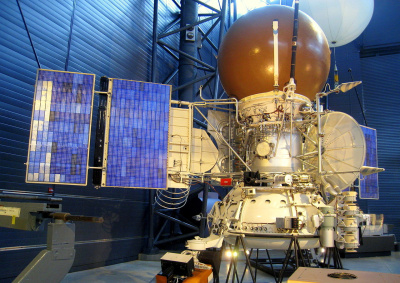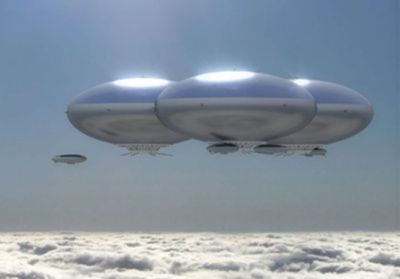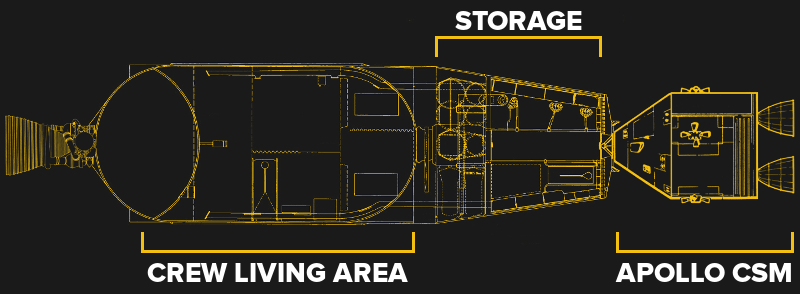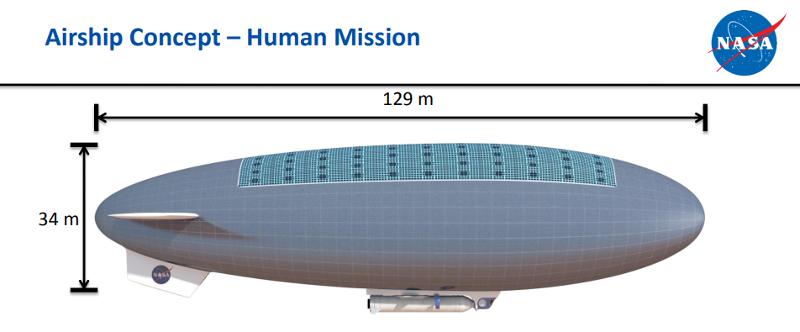Technology
How Lifetime Access to Rosetta Stone Is Cheaper Than You Think
Social distancing means we’re all spending more time in the house than ever… But once you’ve played every board game you own, replayed the entire Halo series on Xbox, and turned your backyard into botanical gardens, what else are supposed to do with your time?
Perhaps this is the moment to spread your wings and learn something new? If you’re itching for some projects to get stuck into, check out our social distancing subscription bundle.
What’s Included?
We’ve teamed up with our partners to offer MUO readers a mega saving on three premium apps:
- Rosetta Stone
- KeepSolid VPN Unlimited
- 12min Premium Micro Book Library
Combined, the apps are worth nearly $850. As a MakeUseOf reader, you can pick up the entire bundle for just $199—a 76 percent discount on the regular price.
Why Use Rosetta Stone?
Rosetta Stone is one of the most comprehensive language-learning suites in the world. It caters for all levels and comes with a variety of learning aids. The program’s aim is to make you absorb your target language in the same way that you do when you’re a child.
In total, 24 languages are offered on the platform, including Spanish, French, German, Italian, Mandarin, and Russian.
This deal gives you lifetime access to all 24 languages on both desktop and mobile.
You’ll also be able to practice your pronunciation with Rosetta Stone’s TruAccent speech recognition technology and, when you feel comfortable enough, use the advanced speech engine to compare your accent with native speakers.
KeepSolid VPN Unlimited
The lockdown has meant we’ve all been binge-watching TV and movies more than ever. That’s where the next tool in the bundle—KeepSolid VPN Unlimited—is useful.
As any regular MakeUseOf reader knows, using a VPN lets you bypass geoblocking that streaming services put in place. It means you can access the Netflix catalog from another country, stream live TV from BBC iPlayer if you’re based outside the UK, and even sign up for paid subscriptions with video-on-demand providers from elsewhere in the world.
Of course, a VPN is also an essential security tool. You can protect yourself on public Wi-Fi, prevent your ISP and local government from seeing your web traffic, and encrypt all your internet data.
KeepSolid VPN Unlimited has servers in more than 80 countries and supports the major VPN protocols such as IKEv2, OpenVPN, and L2TP/IPSec.
Once again, this deal will bag you a lifetime subscription.
12min Premium Micro Book Library
The final lifetime subscription in our social distancing bundle is 12min Premium Micro Book Library.
One of the curious truths about 2020’s lockdown is that while we might all be spending more time in our homes, many of us also have less free time than ever. Anyone with kids knows what we’re talking about.
If you’re a book lover who’s not had time to read any new material in 2020, 12min Premium Micro Book Library might offer a solution. The app’s specialty is providing digestible overviews of long books. In theory, each overview only takes 12 minutes to read. Audio and text versions are available.
In total, more than 380 overviews are on the platform, with 30+ new titles added every month.
Make Social Distancing Fun!
More knowledge, more entertainment, more security. The perfect lockdown combination. If you’d like to get lifetime access to these three premium apps, make sure you grab the bundle while it’s still available—the deal expires on August 15th, 2020.
Read the full article: How Lifetime Access to Rosetta Stone Is Cheaper Than You Think
Technology
CIA’s new tech recruiting pitch: More patents, more profits
America’s most famous spy agency has a major competitor it can’t quite seem to beat: Silicon Valley.
The CIA has long been a place cutting-edge technology is researched, developed, and realized—and it wants to lead in fields like artificial intelligence and biotechnology. However, recruiting and retaining the talent capable of building these tools is a challenge on many levels, especially since a spy agency can’t match Silicon Valley salaries, reputations, and patents.
The agency’s solution is CIA Labs, a new skunkworks that will attempt to recruit and retain technical talent by offering incentives to those who work there. Under the new initiative, announced today, CIA officers will be able for the first time to publicly file patents on the intellectual property they work on—and collect a portion of the the profits. The agency will take the rest of the balance. Dawn Meyerriecks, who heads the agency’s science and technology directorate, says the best-case scenario is that the agency’s research and development could end up paying for itself.
“This is helping maintain US dominance, particularly from a technological perspective,” says Meyerriecks. “That’s really critical for national and economic security. It also democratizes the technology by making it available to the planet in a way that allows the level of the water to rise for all.”
It’s not the first time the agency has worked to commercialize technology it helped develop. The agency already sponsors its own venture capital firm, In-Q-Tel, which has backed companies including Keyhole, the core technology that now makes up Google Earth. Meyerriecks says the CIA maintains relationships with a variety of other venture capitalists with the same goal.
It also works closely with other arms of government like the Intelligence Advanced Research Projects Activity to do basic and expensive research where the private sector and academia often don’t deliver the goods. What CIA Labs aims to do differently is focus inward to attract—and then keep—more scientists and engineers, and become a research partner to academia and industry.
Officers who develop new technologies at CIA Labs will be allowed to patent, license, and profit from their work, making 15% of the total income from the new invention with a cap of $150,000 per year. That could double most agency salaries and make the work more competitive with Silicon Valley.
CIA Labs is looking at areas including artificial intelligence, data analytics, biotechnology, advanced materials, and high-performance quantum computing.
One example of an immediate problem Meyerriecks says the agency faces is being overwhelmed by the amount of data it collects. Its many types of sensors—the kind of tech found on drones, for instance—suck up incalculable mountains of data per second, she says. Officers badly want to develop massive computational power in a relatively small, low-power sensor so the sorting can be done quickly on the device instead of being sent back to a central system.
Of course, efforts to develop new technology inevitably run into questions about how it will actually be used, especially at an agency that has long been a fundamental instrument of American power. Some inventions have been uncontroversial: during the Cold War, Meyerriecks says, the agency helped develop lithium-ion batteries, an innovative power source now widely used by the public. More recently, however, during the war on terrorism, the agency poured resources into advancing nascent drone technology that has made tech-enabled covert assassination a weapon of choice for every American president since 9/11 despite despite ongoing controversy over its potential illegality.
Technology
Exploring the Clouds of Venus; It’s Not Fantasy, But it Will Take Specialized Spacecraft
By now, you’ve likely heard that scientists have found a potential sign of biological life on Venus. Through a series of radio telescope observations in 2017 and 2019, they were able to confirm the presence of phosphine gas high in the planet’s thick atmosphere. Here on Earth, the only way this gas is produced outside of the laboratory is through microbial processes. The fact that it’s detectable at such high concentrations in the Venusian atmosphere means we either don’t know as much as we thought we did about phosphine, or more tantalizingly, that the spark of life has been found on our nearest planetary neighbor.
To many, the idea that life could survive on Venus is difficult to imagine. While it’s technically the planet most like Earth in terms of size, mass, composition, and proximity to the Sun, the surface of this rocky world is absolutely hellish; with a runaway greenhouse effect producing temperatures in excess of 460 C (840 F). Life, at least as we currently know it, would find no safe haven on the surface of Venus. Even the Soviet Venera landers, sent to the planet in the 1980s, were unable to survive the intense heat and pressure for more than a few hours.
While the surface may largely be outside of our reach, the planet’s exceptionally dense atmosphere is another story entirely. At an altitude of approximately 50 kilometers, conditions inside the Venusian atmosphere are far more forgiving. The atmospheric pressure at this altitude is almost identical to surface-level pressures on Earth, and the average temperature is cool enough that liquid water can form. While the chemical composition of the atmosphere is not breathable by Earthly standards, and the clouds of sulfuric acid aren’t particularly welcoming, it’s certainly not out of the realm of possibility that simple organisms could thrive in this CO2-rich environment. If there really is life on Venus, many speculate it will be found hiding in this relatively benign microcosm high in the clouds.
In short, all the pieces seem to be falling into place. Observations confirm a telltale marker of biological life is in the upper levels of the Venusian atmosphere, and we know from previous studies that this region is arguably one of the most Earth-like environments in the solar system. It’s still far too early to claim we’ve discovered extraterrestrial life, but it’s not hard to see why people are getting so excited.
But this isn’t the first time scientists have turned their gaze towards Earth’s twin. In fact, had things gone differently, NASA might have sent a crew out to Venus after the Apollo program had completed its survey of the Moon. If that mission had launched back in the 1970s, it could have fundamentally reshaped our understanding of the planet; and perhaps even our understanding of humanity’s place in the cosmos.
Just Passing Through
The Apollo program was fantastically expensive, and many believed it would be a waste to simply abandon all that equipment and collected knowledge once the primary mission had been completed. So even before the 1969 Moon landing, NASA had started studying potential future uses for the hardware as part of what they called the Apollo Applications Program. The greatest success of this program was SkyLab, but there were other fascinating ideas proposed that unfortunately never left the drawing board.
Certainly the most outlandish of which was the proposed 1973 Venus flyby mission. Using an Apollo Command and Service Module (CSM) that had been specially modified for long duration spaceflight, and a “wet workshop” crew compartment made out of a spent Saturn V upper stage, three astronauts would have embarked on a year-long journey to our nearest planetary neighbor.
After the Saturn V upper stage had put the vehicle into orbit, the Apollo CSM would have detached and rotated 180 degrees to dock with a pressurized storage compartment that had been installed in place of the Lunar Module. The upper stage’s J-2 engine would then be used to perform the trans-Venus injection burn, and afterword, any remaining propellant would have been vented into space. On the journey away from Earth, astronauts would have moved the tightly packed equipment and supplies from the storage area into the now empty propellant tanks through a special hatch installed at the top. With the J-2 engine now inoperable, the redundant twin engines of the proposed Block IV CSM would be used to perform any course corrections as well as the braking burn when the vehicle returned to Earth.
There would have been no way to slow down at Venus after the four month interplanetary flight. Instead, the vehicle would have made a partial orbit of the planet at an altitude of approximately 5,000 kilometers (3,000 miles) before being slung back towards home. This would have only given the crew a few crucial hours to make their observations and deploy sensing equipment, but it was believed their close proximity to the planet would allow them to do more useful science in that short amount of time than could be accomplished remotely with the technology of the era.
Exploring the Clouds
While the human occupants of this makeshift interplanetary ship wouldn’t have stayed for long, it was expected they would drop off a few robotic probes that would descend into the planet’s atmosphere. These probes would have continued operating for a few days after the initial flyby and communicated directly with the retreating crewed spacecraft. This would have allowed them to pack smaller and less powerful radio transmitters than would otherwise have been required to send their findings directly back to Earth, increasing not only their useful payload capacity but the amount of time they could have operated before their batteries were depleted.

While we can only speculate as to what form these probes would have taken, it’s a safe bet that at least some would have been similar to the balloons carried on the Soviet Vega missions in 1985. Filled with helium and treated with chemicals to help resist the corrosive properties of the Venusian clouds, these probes were designed to reach equilibrium and remain within the 50 km temperate zone to collect as much data as possible before their batteries ran down. The Vega balloons proved to be highly successful, though they only carried rudimentary instrumentation.
Had NASA gone ahead with regular Apollo-Venus missions, these floating probes would likely have become more advanced as technology improved and scientists learned more about the planet. We now know that the lower atmosphere is so thick that probes and spacecraft can easily be floated within this temperate zone. Robotic vehicles, and perhaps eventually even crewed ones, could be designed to “splashdown” in the atmosphere rather than pass through it.
Venusian Airships
Despite the inhospitable surface, there are several compelling reasons to mount crewed expeditions to Venus. For one, it’s the second closest destination in the solar system after the Moon. With transit times as short as four months, a round-trip mission is well within the established limits of human endurance in space. From orbit, humans can conduct more detailed and varied observations and experiments than what’s possible with remotely operated vehicles alone.
But humans are explorers by nature, and eventually astronauts will want to descend into the planet’s atmosphere themselves. In that case, they would experience gravity 90% of what they’re used to on Earth; close enough that muscular and skeletal degradation will no longer be a concern. It’s also notable that the breathable mixture of nitrogen and oxygen that human explorers would need to bring along with them would function as buoyant gas in the planet’s 96.5% CO2 atmosphere, allowing for the possibility of crewed Venusian dirigibles.
The idea of sending crewed inflatable vehicles, and even building a permanent outpost in the clouds, was explored by NASA as recently as 2015. Called the High Altitude Venus Operational Concept (HAVOC), this study proposed a spacecraft architecture that could safely insert human crews into the temperate layers of the Venusian atmosphere, allow them to work there for extended periods of time, and then return them to orbit with an air-launched rocket. Outwardly these craft, some as large as 129 meters in length, would closely resemble large rigid airships of the early 20th century such as the USS Shenandoah and the Hindenburg.
The Next Steps
As exciting as the prospect of a human “Cloud City” on Venus might be, it’ll probably never happen. If recent history is any indication, securing the long-term political backing necessary to fund an undertaking of this magnitude would be all but impossible. It was hard enough getting American astronauts back into orbit on domestic spacecraft, and the agency’s elaborate plans for a return to the Moon seem perpetually years down the road.

Sending a crewed mission into orbit around Venus would be considerably easier and cheaper than establishing an outpost, but it’s still far more likely that the most direct consequence to finding phosphine gas in the planet’s atmosphere is a push for a new generation of robotic missions. Technology has improved dramatically, and building a floating atmospheric probe designed to seek out signs of biological life is no longer the insurmountable challenge it was in the 1970s.
Indeed, the wheels are already in motion. Rocket Lab CEO Peter Beck has already announced his company plans on launching a small probe towards Venus as soon as 2023 that will be designed to dive into the planet’s atmosphere and search for signs of microbial life. The probe will be tiny, owing to the relatively meager payload capacity of the Electron rocket, but it’s a start. Hopefully larger and more elaborate spacecraft won’t be far behind.
While we’ll never see an astronaut take their one small step on the rocky surface of Venus, it’s still a planet that clearly deserves a closer look. Confirming the existence of extraterrestrial life would be one of the greatest scientific discoveries of all time, doubly so if it ends up being on a world so much like our own. Studying the hearty lifeforms that make Venus their home would be as near as we’ll ever get to directly observing Earth’s distant past. Or, if we’re not careful, Earth’s distant future.
Technology
How To Stylize App Icons And Widgets On iOS 14 Home Screen?
Last week, Apple rolled out the iOS 14 update with several big features. One that has taken iPhone users by storm is the introduction of iOS 14 Home screen widgets.
The new feature enables users to place widgets on the home screen. iOS 14 widgets come in three different sizes and can be placed anywhere on the home screen.
Since the launch of iOS 14, app developers have been continuously working to bring home screen widgets for their respective apps. iPhone users, in the meantime, have taken it upon themselves to make the most out of the Home screen widgets feature with the help of Widgetsmith.
How to customize iOS 14 widgets?
Widgetsmith is a free app on the App Store through which users can add different types of widgets to their iOS 14 home screen, change the size, and even stylize the widgets.
The iOS app bundles widgets to show time, calendar, reminders, weather (paid), health, tides (paid), and astronomy. It also has the option to create custom widgets to display photos, text, or leave it blank with a solid color.
How to use WidgetSmith?
- Open the app and select the size of the widget (small, medium, and large)
- Tap on the Default Widget box
- Select the style (date, time, custom, etc). Here you can change the font, tint color, and background color.
- Go to the previous screen and tap on the Save button
- On the home screen, long-press on an empty area and tap on the ‘+’ button
- Scroll down and tap on “WidgetSmith”
- Choose the same widget size and tap on “Add Widgets”
- Tap Done
- Long-press the widget and tap on “Edit Widget” to change the style
How to customize iOS 14 app icons?
If you take a look at the #ios14homescreen Twitter trend, you will notice that it’s not just widgets, iPhone users have also customized the app icons as well.
For the first time, iOS users have managed to bring Android level customization on their home screen thanks to these two features. Here’s how to change the look of app icons on iOS 14 home screen —
- Open the Shortcuts app (App Store)
- Tap on the ‘+’ icon to create a new shortcut
- Tap on “Add Action”
- Search for “Open App” and tap on the action
- Tap “Choose” and select the app you want to stylize
- Tap on the triple dot icon
- Tap on “Add to Home Screen”
- Use the app name as Shortcut’s name. Tap on the shortcut’s icon under the Home screen name and icon
- Choose a photo for the shortcut
- Tap on Add
Changing icons on iOS 14 is a long and tedious process. If you are up for it, don’t forget to share your customized home screen screenshot in the comment section below.
The post How To Stylize App Icons And Widgets On iOS 14 Home Screen? appeared first on Fossbytes.
-
 Business2 months ago
Business2 months agoBernice King, Ava DuVernay reflect on the legacy of John Lewis
-
World News2 months ago
Heavy rain threatens flood-weary Japan, Korean Peninsula
-
 Technology2 months ago
Technology2 months agoEverything New On Netflix This Weekend: July 25, 2020
-
Finance4 months ago
Will Equal Weighted Index Funds Outperform Their Benchmark Indexes?
-
Marketing Strategies9 months ago
Top 20 Workers’ Compensation Law Blogs & Websites To Follow in 2020
-
 World News8 months ago
World News8 months agoThe West Blames the Wuhan Coronavirus on China’s Love of Eating Wild Animals. The Truth Is More Complex
-
Economy11 months ago
Newsletter: Jobs, Consumers and Wages
-
 Finance9 months ago
Finance9 months ago$95 Grocery Budget + Weekly Menu Plan for 8



